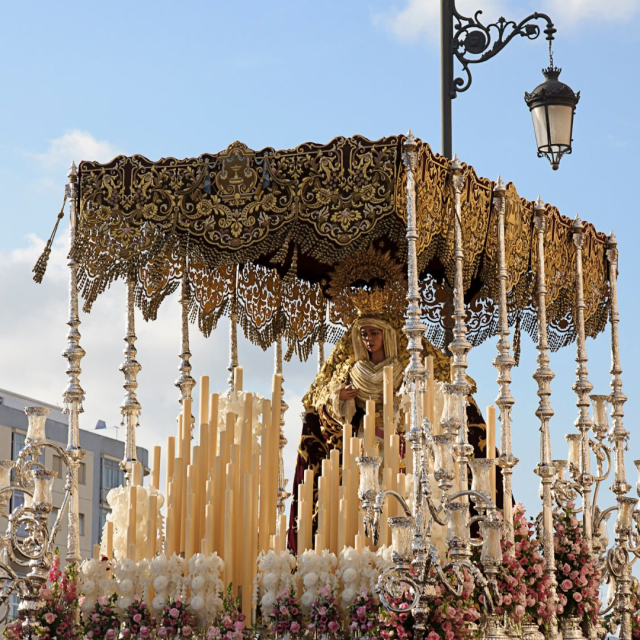Holy Week is one of the most important religious and cultural celebrations in Mexico. Every year, thousands of people participate in various activities that combine Christian devotion with popular traditions. In 2025, Holy Week will be celebrated from Sunday, April 13 to Saturday, April 19, followed by Easter Sunday on April 20. During this period, different regions of the country will hold processions, representations of the Passion of Christ, and cultural events that attract the faithful and tourists alike.
Origin and Meaning of Holy Week
Holy Week commemorates the Passion, Death and Resurrection of Jesus Christ according to Christian tradition. It begins on Palm Sunday, commemorating Jesus' triumphant entry into Jerusalem, and concludes with Easter Sunday, when his triumph over death is celebrated. This period is an opportunity for reflection and penitence for believers, who attend masses, processions and religious activities throughout the country.
Featured Celebrations in Mexico
Mexico is known for the intensity with which it celebrates Holy Week, and several localities host events that have gained national and international fame. Some of the most important celebrations include:
1. The Passion of Christ in Iztapalapa (Mexico City)
The Passion Play in Iztapalapa is one of the most iconic in Mexico and the world. Since 1843, this community has organized a large-scale recreation with thousands of participants. In 2025, the procession is expected to bring together more than two million spectators and participants, with scenes including the Last Supper, the trial of Jesus and his crucifixion on the Cerro de la Estrella.
2. Taxco, Guerrero: An Encounter with Faith
Holy Week in Taxco is known for its solemn processions, in which the "encruzados" and the "flagellants" participate, people who perform acts of penitence as a sign of devotion. These impressive displays of faith include long walks and self-flagellations that symbolize the sacrifice of Christ. The colonial beauty of Taxco and its strong religious roots make this celebration a unique experience.
3. San Luis Potosí and the Procession of Silence
In San Luis Potosí, the Procession of Silence is a moving event that goes through the streets of the city with participants dressed in robes and hoods, in a solemn and mystical atmosphere. Inspired by the traditions of Seville in Spain, this procession is one of the most significant in Latin America and is expected to gather thousands of faithful in 2025.
4. Oaxaca and its Traditional Rites
Oaxaca, known for its cultural richness, celebrates Holy Week with a mix of indigenous and Catholic traditions. Highlights include the Good Friday Procession and representations of the Passion of Christ in various neighborhoods. Gastronomy also plays a key role, with traditional dishes such as tamales de vigilia and caldo de piedra.
5. San Cristobal de las Casas, Chiapas
In this colonial city, Holy Week is celebrated with great intensity, combining Catholic rituals with indigenous traditions. Processions of religious images through the cobbled streets and celebrations in the temples fill the atmosphere with spirituality and mysticism.
Easter Gastronomy in Mexico
During Holy Week, food plays a fundamental role in Mexican culture. As many believers practice abstinence from red meat, traditional dishes include:
Romeritos with mole : A dish based on romeritos, dried shrimp and mole.
Shrimp cakes : Made with dried shrimp and egg, accompanied by nopales in red sauce.
Capirotada : A traditional dessert made with bread, piloncillo, raisins, cheese and cinnamon.
Veracruz-style fish : A dish with tomato sauce, olives and capers.
Tourism and Easter in Mexico
Holy Week is also a season of great tourist activity in the country. Many families take advantage of the days off to travel to beach destinations such as Acapulco, Cancun, Puerto Vallarta or Huatulco. Others prefer to explore magical towns and colonial cities such as Guanajuato, San Miguel de Allende and Puebla.
Holy Week 2025 in Mexico will be an opportunity to experience spirituality, tradition and culture at their best. From solemn processions in historic cities to representations of the Passion of Christ in emblematic communities, every corner of the country offers a unique experience. Whether for religious or tourist reasons, this celebration remains a fundamental pillar of Mexican identity, attracting believers and visitors seeking to learn about the cultural richness of this holiday.
